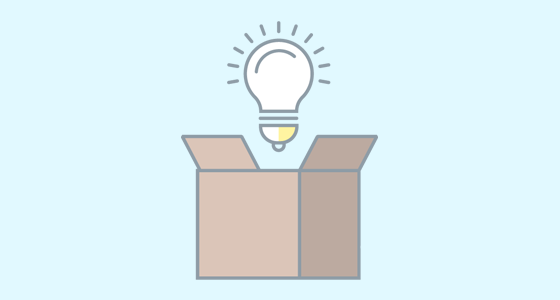
Every single day of running a business – whether it’s Ecommerce or physical, B2B or B2C – is a series of decisions, big and small. As a B2B, the way your fulfillment chain works, and the way it scales, will inevitably present some of those key decision crossroads. As 2019 stats from DHL show, only about 40% of Ecommerce businesses rely entirely on insourced fulfillment, while 48% use a hybrid insourced-outsourced model, and only 34% plan to be entirely insourced over the next 3-to-5 years. The numbers illustrate that there’s clearly something to both methods, but the choice may come down to where your business is at, in terms of its lifecycle, volume and scale.
Insourcing vs. Outsourcing Ecommerce Fulfillment in Comparison
Strong decision-making lies on a foundation of research, so before you can have a fruitful exploration of what’s best for your business, you’ve got to build that foundation. Just as in many other areas of B2B, insourcing is essentially practicing business – in this case, fulfillment – using resources that are already a part of your existing operational infrastructure, while outsourcing involves hiring outside resources to handle certain tasks. Of course, the basics get a little more nuanced when dealing specifically with B2B logistics and fulfillment.
Insourcing Fulfillment
Most small Ecommerce businesses and B2B startups will naturally rely on insourcing fulfillment before turning to outsourcing, as it’s simply the practice of processing all of your B2B orders internally, with no outside help. In this case, your internal staff covers jobs such as inventory management, picking, packing, shipping and even handling returns and exchanges.
Outsourcing Fulfillment
While insourcing relies entirely on existing company resources to fulfill orders, outsourcing your fulfillment brings in unaffiliated, third-party companies or other types of fulfillment providers to assist with some or all of those aforementioned logistics tasks – and in some cases, additional related tasks. In Ecommerce, this outside help is often referred to as 3PL, or “third-party logistics.”
Starting Out with Insourcing
Small-to-mid-sized B2B outfits often rely on insourcing at the beginning of their business lifecycle for plenty of reasons, not the least of which is that it may be more cost-efficient – paying staff is already part of your business plan, which means you already have an exact budget for each step of the fulfillment process. But its pros – and likewise, its drawbacks – run a bit deeper:
What works:
- Just right for low volume: If your Ecommerce company doesn’t ship in volumes that call for third-party help, it’s hard to justify spending more money on fulfillment processes that you can handle in-house, at least until the time comes to scale.
- Increased product engagement: Just as insourcing “keeps it in the family,” the practice also helps you and your team stay more hands-on and engaged with your products day in and day out. This seems subtle, but can be a real boon when it comes to product development, as well as improving your fulfillment process.
- Increased customer engagement: Just as insourcing keeps your hands on your products, it can help you keep your eyes on your customers. Like Sprint Logistics says, insourcing “allows you to deal directly with customers, offering the customer services you want your brand to offer, and allows you to align delivery, warehousing and more with your company’s goals, values and wider processes.”
What doesn’t:
- The time investment: To lean on the cliche, it’s absolutely true that time is – or least can be – money. In the long run, paying long-term staff for time sinks like picking, packing and haggling with customers over returns can add up, especially when their experience and hands-on knowledge of the company might be better applied elsewhere.
- More room for error: Look, your B2B enterprise is not a logistics company – the 3PL that you outsource is. With increased focus and experience comes less risk of common mistakes.
- Less flexibility: Because your in-house staff is trained and, eventually, experienced in your distinct fulfillment pipeline, they may be less maneuverable when it comes time to diversify or innovate
- It can overstay its welcome: Again, while Ecommerce insourcing is often more cost-effective at the start, once it becomes your responsibility to start handling costs like external storage spaces, expanded staff, expensive logistics software or delivery fleets, outsourcing might just be worth a look.
FBA: A Rising Middle Ground
FBA, or “Fulfillment by Amazon,” offers a sort of middle-ground option for smaller businesses who have enough inventory to need additional storage space. Ostensibly a method of outsourcing, FBA is a bit unique in that it caters specifically to B2Bs who sell products through the retail giant. Here, businesses send their inventory to an Amazon warehouse, and Amazon in turn handles the storage and shipping logistics.
However, FBA isn’t 100% outsourced, as the process of prepping and sending your inventory to Amazon’s fulfillment centers is no small task, requiring a variety of compliant packing, shipping and inspection processes. As such, businesses may also choose to rely on 3PLs to handle FBA prep.
Scaling Up With Outsourcing
For the most part in Ecommerce, outsourcing comes with the scaling and maturation of your B2B operation. But just like insourcing, it’s not a one-size-fits-all solution. Here’s why:
What works:
- More efficient at the right scale: Outsourcing fulfillment works best for large volumes, so when your company reaches the right size, it can actually save you money. This is mainly because fulfillment providers offer a combination of all-in-one fee structures for storage, packing and shipping, as well as lower high-volume shipping rates.
- It’s flexible: In addition to more flexibility at the warehouse and in the transportation network, Verst Logistics notes that with outsourcing partners, “Leveraging the Ecommerce fulfillment and omnichannel distribution expertise of a 3PL will reduce inventory carrying cost by maintaining appropriate levels of stock, and position product optimally to serve customers – wherever they choose to purchase.”
- It shifts focus: Enlisting outside help means that your staff has more time and energy to invest in increasing sales and developing products – both of which are essential to a healthy B2B. And because an outside source is in charge of monitoring inventory and fulfillment staff, it’s easier to scale your logistics.
- Specialization is effective: Chances are, 3PL is going to have more high-tech, streamlined fulfillment procedures than your non-logistics B2B is capable of. This can make for more flexibility, more agility and happier customers, all of which are competitive advantages. Depending on the 3PL, you may also find more specialized returns processing, reverse logistics, inspection, cross-docking and order consolidation.
- Redundancy is good (in this case): In a Zoom meeting that could’ve been an email, redundancy is not great. But when unexpected sales spikes or staff shortages hit, having more than one way to fulfill your orders is a good thing.
What doesn’t:
- The monetary investment: Sure, 3PL can save money and time as part of healthy B2B scaling, but upfront the cost investment compared to insourcing is no contest.
- Less personalization: Especially if your B2B emphasizes a personal touch, you may find that outsourcing doesn’t offer the bespoke, custom or personalized and branded packaging options that you prefer.
- Less control, more communication: As with just about anything not done in-house, you simply have less control over how a third-party resource operates. This can also result in more time spent on communicating your needs compared to in-house communication. Ultimately, working with outside resources does open the door for incompatible corporate cultures.
What Works for You?
When the time comes, making the choice between insourcing and outsourcing your Ecommerce fulfillment requires a thorough audit of your current business operations, and a close look at both volume and procedures. As Ryan Martin of ITS Logistics puts it, “It’s important to completely understand your order volume, operating procedures and challenges, as well as the pros and cons of each fulfillment option. Insourcing fulfillment can be a good option for smaller businesses that are just getting started, while outsourcing can greatly increase your efficiency and the ability to scale your operations.”
As a question of maturity, demand and on-hand resources, the way you fulfill your orders can be an essential part of how your business scales – and ultimately, how it thrives. For more B2B Ecommerce insights and tips on fulfillment, check out our Shipping and Logistics blog posts.
Dan is a freelance lifestyle writer and co-owner of two small businesses who splits his time between Dallas and LA. Throughout the last decade-plus, he’s been fortunate to collaborate with business brands such as Office Depot, The Motley Fool, Chron, Fortune and more.





